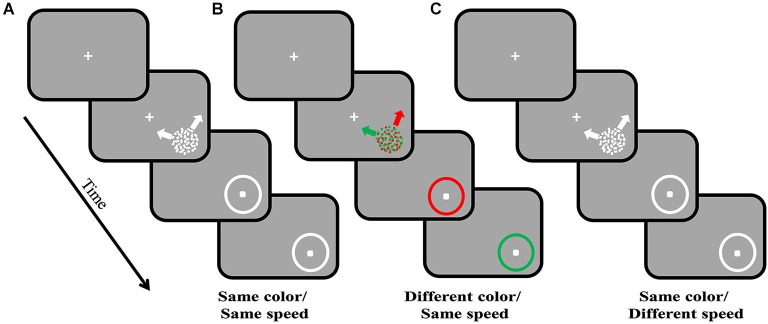Figure 2.

Direction repulsion staircase paradigm. Each trial commences with the appearance of a centrally located fixation point. Once fixation is maintained for 200 ms, the visual stimulus, two superimposed, coherently moving in different directions, random dot kinetograms (RDK’s), are presented in the lower right quadrant. In (A) the two surfaces are the same color and move at the same speed. In (B) the surfaces are the same speed but are different colors, and in (C) the surfaces are the same colors but different speeds. The two surfaces are presented for a variable amount of time (staircase procedure). Once they are removed, participants use a mouse to indicate the two directions of motion by clicking on the response circle, once for each direction. In (B) participants are required to give the direction for the indicated colored surface in order; the order is randomly assigned between trials. Initially the visual stimulus is presented for 2000 ms, and based on participant’s ability to correctly determine both directions of motion, this time will either increase or decrease in successive blocks of trials. Once participants reach a double reversal of presentation times, the time needed to process both directions of motion can be estimated to within ±50 ms. Direction repulsion is calculated as the difference between the angle created by the two clicks on the response circle and the angle created by the two real directions of motion.
